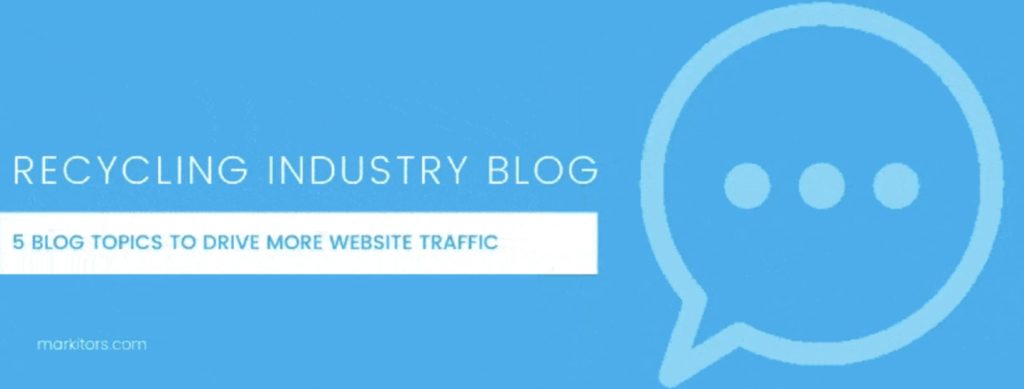
There’s a reason why a whopping 91% of B2B marketers use content marketing—it works. And the bread and butter of content marketing to this day is still blogging.
With that in mind, we put together this list of five recycling blog topics to help recycling companies get started with content marketing.
If you run a recycling company, you know you’re facing a competitive industry and compressed margins, but content marketing can help your business stand out from the crowd and reverse the trend—if it’s done right.
-
- Why is blogging important for recycling companies?
- 5 blog topics for recycling companies
- Finding recycling blog topics using Google Trends
- Finding recycling blog topics using Google Suggest and People Also Ask
- Best practices for using recycling blogs as a marketing tool
- A helping hand to drive traffic to your new blog
⌨️ Why is blogging important for recycling companies?
Blogging is the foundation of any effective content marketing strategy. Blogs help your website draw in organic traffic from search engines like Google or Bing, but more than that they allow your marketing efforts to target the right audience.
Blogging helps inform clients and starts the relationship-building process before you get the first email or call. If you can provide the help clients need at no cost to them, it’s a great first impression.
Additionally, content marketing focuses on turning visitors into customers. With strong calls-to-action and conversion optimization, content marketing isn’t just about web traffic—it’s about the bottom line.
5 blog topics for recycling companies
So you know you need blogging, but you’re a little unsure about what to write about? Brainstorming dozens, if not more, recycling blog topics can be challenging after you hit a wall.
We put together five great options to get you started, plus a couple of brainstorming tips to help you maintain momentum.
1. FAQs
FAQs, or frequently asked questions, are some of the best topics you can cover in a blog. Not only do they target the right audience, but they also might allow your blog to be the answer for a featured snippet on Google.
A featured snippet is the box with a summarized answer that oftentimes appears above search results when you ask a question.
Here’s an example for the query “what are the benefits of electronics recycling?” where the site TechDump has a featured snippet.
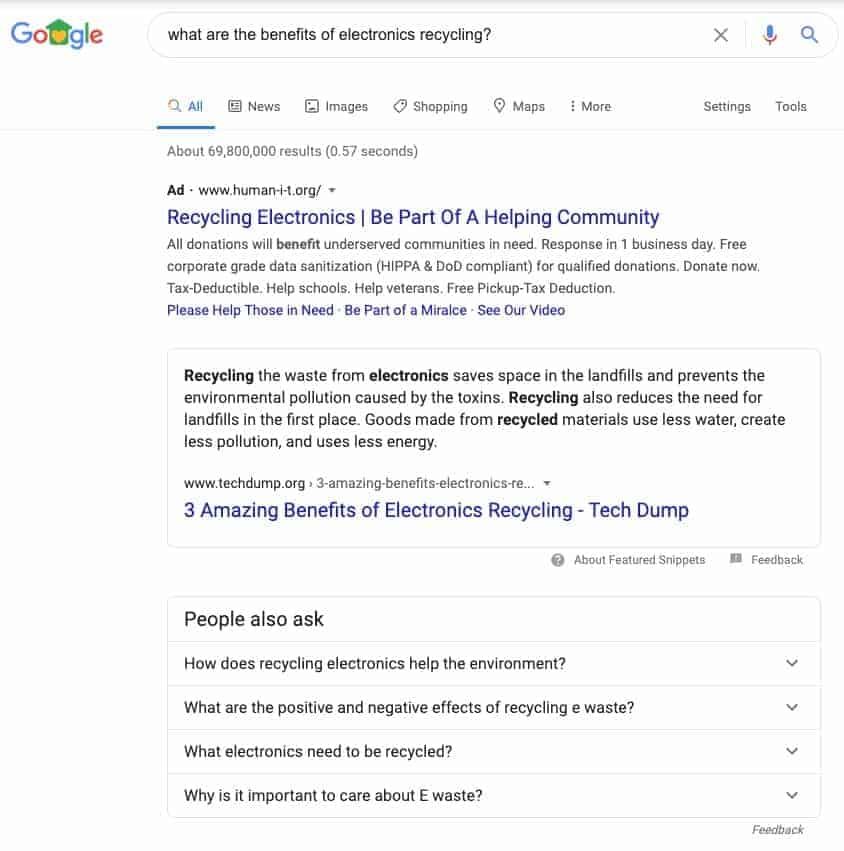
Their blog on benefits of electronics recycling perfectly caters to this commonly asked question. This is one of the best strategies to increase organic traffic to your blog.
2. Area of specialty
Recycling companies’ services can sometimes get a little confusing for potential clients who have little experience in the recycling industry. That’s why it’s a great idea to create some ‘area of specialty’ recycling blog topics that do deep dives on the more obscure areas of service you may provide.
For example, Generated Materials Recovery often does wood pallet recycling. The laymen might not know how that works.
That’s why it made sense for them to create a blog about the process. That way when people are wondering how pallet recovery works, they can find Generated Materials Recovery and use their services or at least get some helpful information from the site.
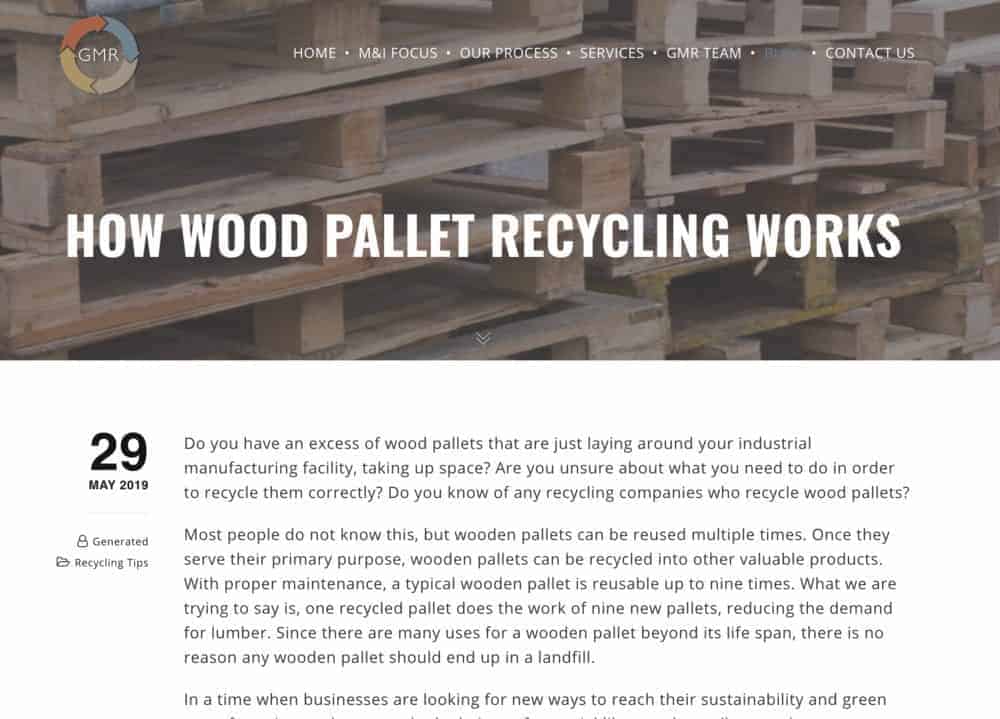 3. Facts and figures
3. Facts and figures
The recycling industry is in a state of constant evolution from new technologies, recycling methods, and market influences.
That’s why having consistently updated blogs with facts and figures is a great way to draw in clients who are looking to see what has changed recently.
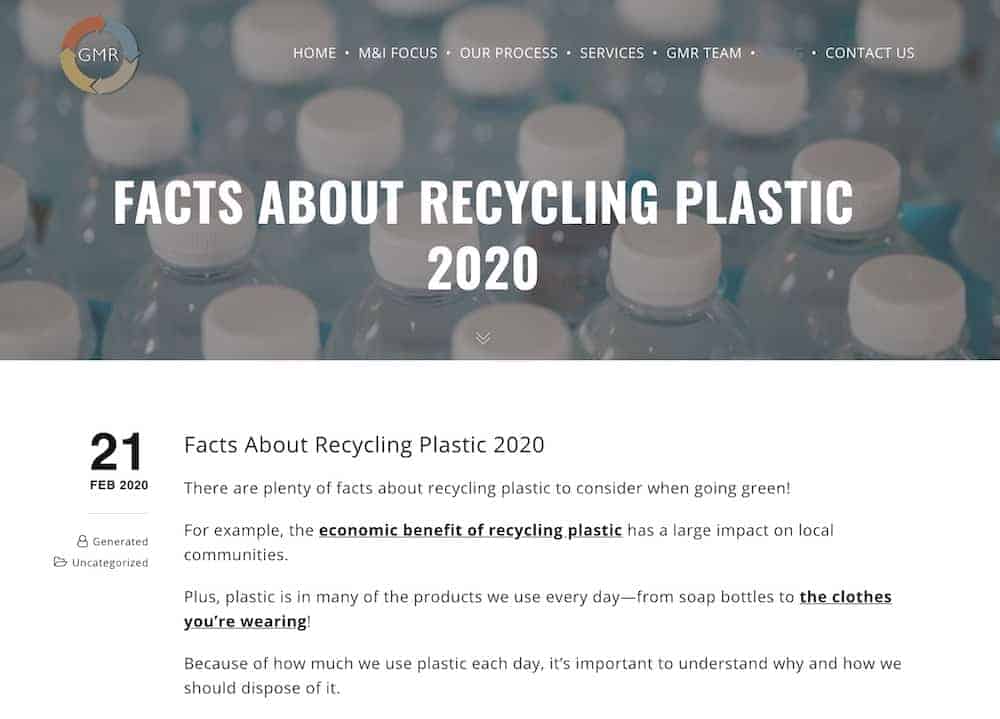 Facts and figures blogs are also easy to produce, look very professional, and will help increase your site’s organic traffic.
Facts and figures blogs are also easy to produce, look very professional, and will help increase your site’s organic traffic.
4. How-to Guides
Did you know over 8% of Google searches are questions?
Targeting those questions with how-to guides is a strategic blog idea. Your blogs can respond to questions as common as “how to recycle business waste?” or they can be about something more obscure like “how to improve your shrink wrap recycling program?” as you see below.
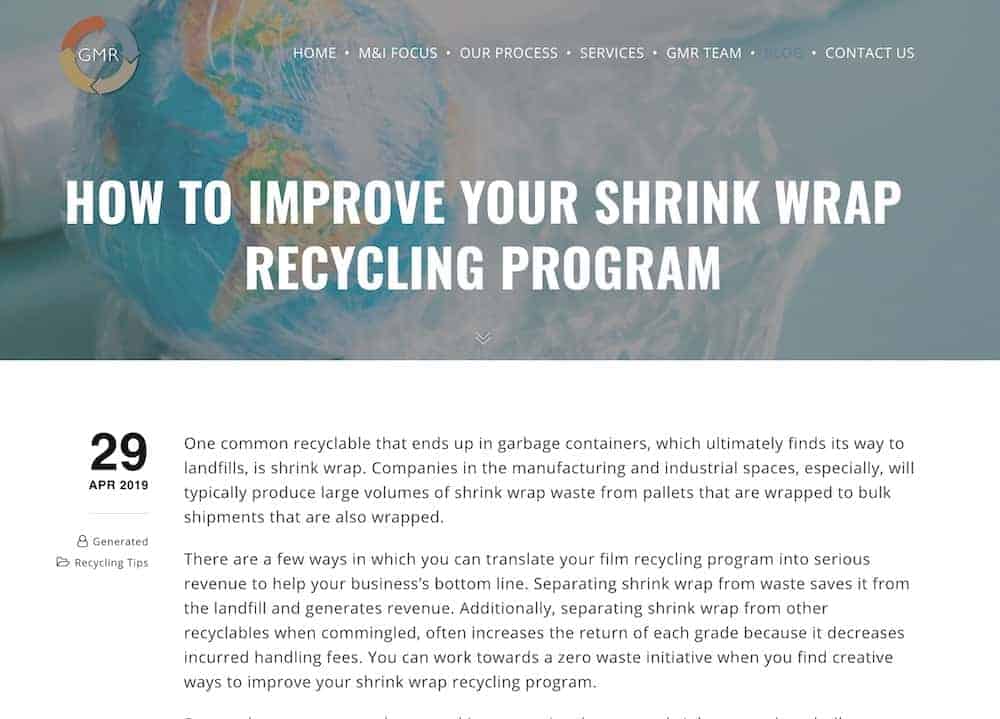 Another reason to use how-to guide blogs is to help explain simple customer problems with your services and take them through a step-by-step process. This can save your tech or customer support team a lot of time.
Another reason to use how-to guide blogs is to help explain simple customer problems with your services and take them through a step-by-step process. This can save your tech or customer support team a lot of time.
Take the example of Waste Management, the United State’s largest waste services company, showing customers how to read their invoices.
 5. Debunking industry myths
5. Debunking industry myths
Debunking industry myths is another recycling blog topic to target commonly searched keywords. For example, how do you target a keyword like ‘recycling is inconvenient.’ You can’t target that keyword with a how-to guide.
The best way is to make a blog debunking the myth so you can hopefully educate and at the same time draw in new customers. Here’s an example from Dakota Valley Recycling.
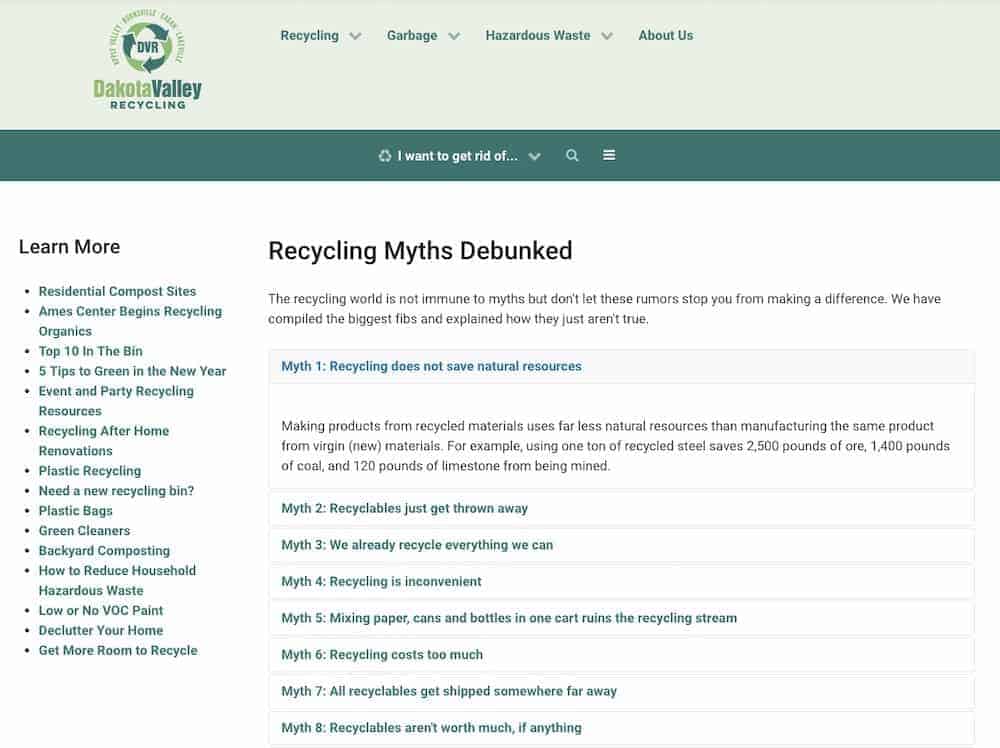
Brainstorming tip: Finding recycling blog ideas using Google Trends
If you’re having trouble brainstorming blog ideas, one of the first places to look for help should be Google Trends.
Google Trends is a free, easy to use tool that is perfect for SEO beginners looking to have a data-driven content marketing approach without spending the extra cash on SEO tools like Ahrefs or Moz.
In the below example, we type in a particular type of recycling, ‘electronics recycling’ to see how it has been trending. Trends then gives us a chart of the keyword’s interest over the past twelve months or whichever time frame you choose. Unfortunately, this term hasn’t been gaining in traffic, so you might want to continue searching related topics.
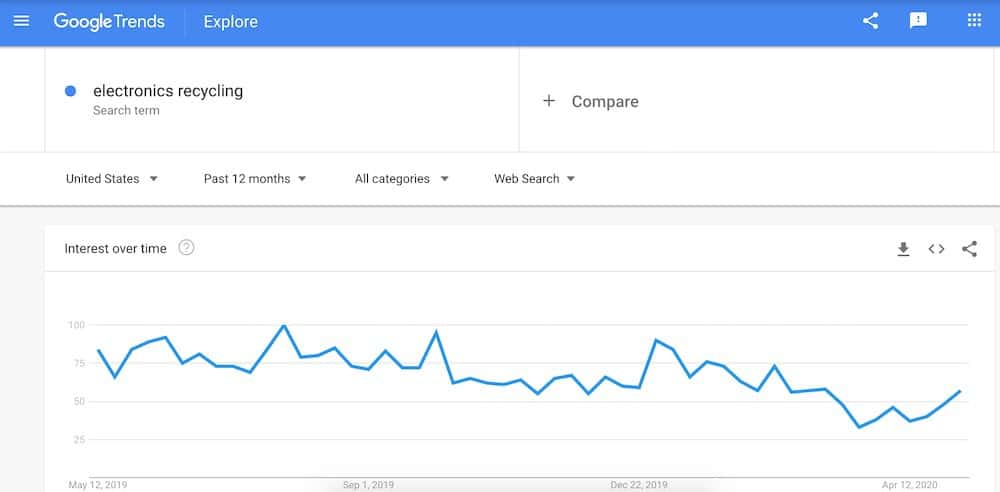 Google Trends can help with that too. Below the interest over time graph, you’ll find a regional chart showing the traffic by region, and then related topics and queries.
Google Trends can help with that too. Below the interest over time graph, you’ll find a regional chart showing the traffic by region, and then related topics and queries.
The related topics and queries section is the perfect place to find blog topics that are trending.

Brainstorming tip: Finding recycling blog ideas using Google Suggest and People Also Ask
Another great brainstorming tip for recycling companies looking to find blog topics is to try using Google Suggest, also known as autocomplete. When you type a query into Google Suggest will automatically come up with other common search queries.
Here’s an example using the query ‘industrial recycling.’
 If using Google Suggest isn’t helpful, you can always look for commonly asked questions to write a blog post about using the People Also Ask section.
If using Google Suggest isn’t helpful, you can always look for commonly asked questions to write a blog post about using the People Also Ask section.
People Also Ask (PAA) is a section on Google’s search engine results pages (SERPs) that comes up with commonly asked questions that relate to a given query.
For example, by looking at the PAA for the query ‘industrial recycling’ you can find a lot of valuable potential blog topics based on commonly searched questions.
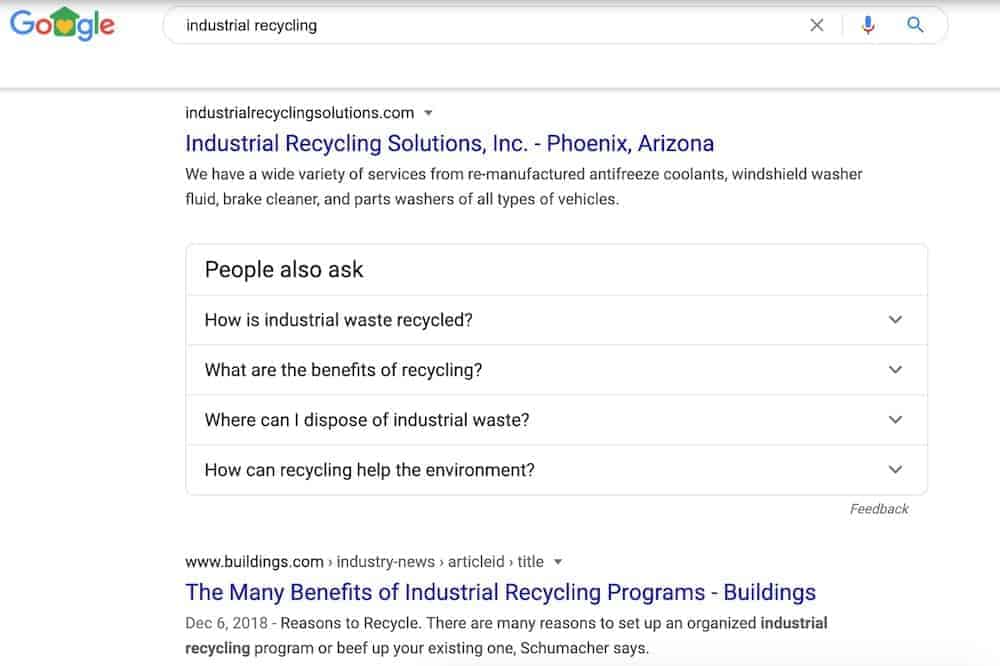
Best practices for using recycling blogs as a marketing tool
Now that you know what to write about, here are some best practices to keep in mind as you target your new recycling blog topics.
- Inform, don’t sell. Remember blogging is about informing potential clients, not directly selling to them. All your blogs should be informative first and tie in your services with a call-to-action when they naturally fit. For example, a blog about how secure document destruction works may mention a company in the section about pricing (i.e. “the industry average is XYZ, but the pricing model at Shreddies LLC is XYZ”). What you don’t want to do is plug in a sales pitch in every other paragraph.
- Blogging and SEO take time. Your blog content isn’t going to shoot up the search engine results pages overnight. In fact, according to Google, it may take anywhere from four months to a year for SEO to really work its magic.
- Formatting matters. There are so many blogs out there that if you want to stand out your formatting needs to be professional and make your content easy to digest. That’s easier said than done. From adding videos and banners to creating GIFs and templates, there’s a lot that goes into formatting, so take your time and get it right.
- Remember internal linking. Google was established as a hypertextual search engine. That means it ‘crawls’ or reads sites using hypertext (also known as links). Because of this, all your blogs should have internal links back to other relevant parts of your website, such as service pages, to help search engines crawl and index your site more readily.
- Create an SEO content strategy to connect your blogs. Having a full-fledged SEO content strategy based on industry research, competitor analysis, keyword research, and more is incredibly important. Blogs need to be posted consistently on a schedule and target the right audience. That can be difficult without an SEO content strategy.
Need a helping hand to drive traffic to your new blog?
Content marketing is a very time-consuming process. It may not be for everyone, but if you can put in the work and be consistent the rewards of content marketing are well worth the effort.
Still, sometimes recycling business owners don’t have the time to engage in the marketing efforts they’d like to. That’s where a digital marketing agency can come in and make a difference.
If you want to get started with content marketing, but don’t have the time, try our free SEO audit. We’ve compiled over 70 of the top SEO and website review tools on the market to deliver a comprehensive report. From there, we’d be more than happy to continue guiding you through your SEO journey.
Markitors is an internet marketing agency with a focus on SEO. We help small businesses rank higher on Google to draw more leads to websites and increase revenue. Explore what’s in our SEO toolbox: audits and keyword research, digital PR, technical SEO, and local SEO.








